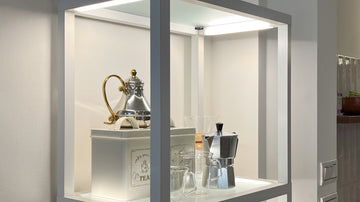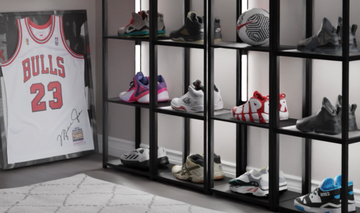Easy Ways to Conserve Energy at Home

Every year in the United States, carbon dioxide emissions range in the millions(!) of tons. According to Statista.com, we released upwards of 4,500 metric tons of carbon dioxide into the atmosphere in 2020 alone.
Carbon dioxide is a potent greenhouse gas, which is released as a product of the combustion of fossil fuels, used to heat and light our homes and power our lives.
Cutting back on carbon emissions means (in part) being energy conscious.
And there are things you can do, right now, at home, to make an impact.
Things like…
1.Turn things off!
Here’s the easiest and most obvious way to cut back on carbon emissions. If you’re not using it, turn it off.
It doesn’t matter if it’s your computer, your TV, an appliance, the lights in a room, or even a heater. Just turn it off or unplug it when you’re not using it - simple as that.
If you’re away from home or use decorative lights, and don’t want to leave everything dark for too long, you should consider using a timer that can optimize (minimize) your use of energy.
This is actually a good strategy, even when you are home, as it can prevent you from leaving lights on all night.
2. Take advantage of natural light
During the day, there’s no reason to be burning electric lights when you have perfectly good windows! Granted, not every room or setting is conducive to the use of natural light, but many are, and the sun’s light is free for all to use.
Just open the curtains or the windows. You’ll use less electricity, save money, and get this: you might even feel better, as studies have suggested that exposure to natural ambient light (like sunlight) boosts serotonin levels in the brain.
3. Upgrade your lighting
Of course, we are pragmatic enough to recognize that natural light is not a solution through all hours of the day (and night).
But you can still cut energy costs by upgrading your current lighting infrastructure. Notably, upgrade that old incandescent or CFL floor lamp with a modern LED floor lamp from our online shop.
While you’re at it, upgrade all of the other lights in your home with LEDs, too. LED light bulbs are up to 75% more energy efficient than incandescents and contain no mercury like CFLs. On top of that, they will last 25 times longer (or more!) than most incandescent bulbs.
So, you end up paying a little more for an LED up front, but it will pay you back in spades, not to mention the aesthetic boost your interior design will get from an upgrade to one of our sleek modern LED floor lamps!

4.Turn down the brightness on the TV
Many modern TVs have an ABC (automatic brightness control) sensor, that sets the brightness to an appropriate level given the ambient light level.
However, you can still control the brightness of a TV by manually turning it down a few notches. This can hardly be said to affect the viewership experience and since display brightness consumes the most energy in a TV set, turning it down can save you quite a lot of electricity.
5.Keep the cold air out
In the winter, don’t spend as much time turning down the thermostat as you do cold-proofing your home (although turning down the thermostat is a good idea too).
Tiny cracks under your doors and around your window frames let cold air in, costing you money and contributing to your home’s carbon emissions because you’ll need to burn more natural gas or electricity to stay warm.
Fortunately, there are things you can do about it. You can use window tape or putty to seal the cracks around windows (you can feel for these in the winter; you’ll notice it’s colder around the windows), and as for the doors, get some weather-resistant door-insulation strips and place them under your doors. They’ll keep your house warmer!
6.Be conscious of hot water consumption
It takes a huge amount of energy to heat water since water has such a high specific heat. If you enjoy taking baths, consider switching to showers (which use less water) or simply taking fewer.
Another way to limit hot water consumption is to try washing your clothes in cool water. In fact, many materials (such as cotton or wool) do better in cool cycles as cold water less damaging to the fibers and less likely to cause shrinkage.
Try it out with your next load of laundry and see how it does.

7.Replace your HVAC system’s air filter
Finally, be conscientious about replacing your HVAC system’s air filter at least once every three months. Not only is this better for your family’s health (since HVAC air filters capture dust, pollen, and other allergens) but it will ensure your system runs as efficiently as possible, too.
A fresh air filter will help your system run more efficiently and effectively. In fact, the Department of Energy once issued a statement claiming that HVAC systems with clean filters may run at up to 15% greater efficiency than those with dirty or obstructed filters.
That’s a compelling reason in its own right, not only for the purposes of reducing carbon emissions, but for safeguarding the longevity of your HVAC system by forestalling major (and costly) repairs, and by saving you money on fuel.
Cut Carbon Emissions Today!
Some of these suggestions are easier to put into practice immediately than others. For instance, you can start unplugging unused appliances right now and start saving your wallet and the environment.
For others, put an action plan in place. Consider upgrading your interior lighting to LEDs by investing in one of our modern LED floor lamps (we offer mid-century modern torchiere and arc floor lamps in our collection), or make a schedule for washing clothes on cold cycles and see how it turns out. Then, over time, you can adopt more of these energy-saving, carbon-emission-reducing practices.
Every little bit you can do makes a difference!






